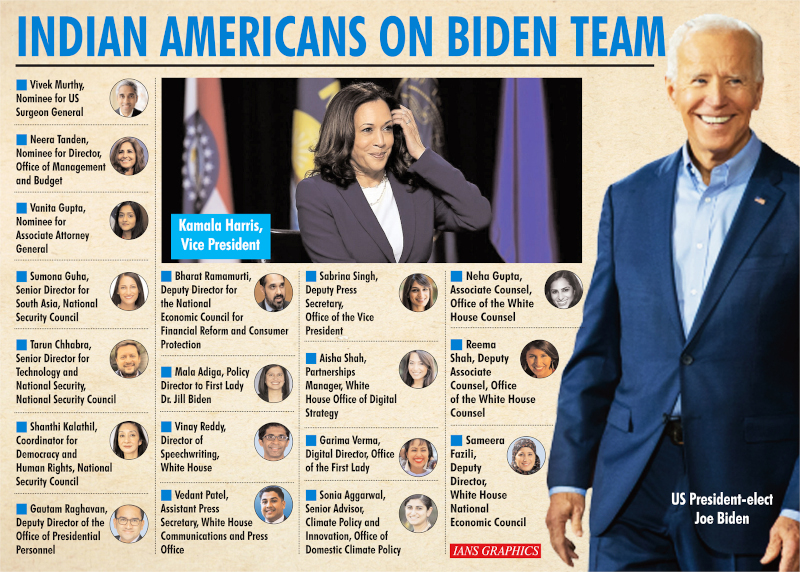
Month: January 2021
The Sindhi homeland of the “Dravidians”
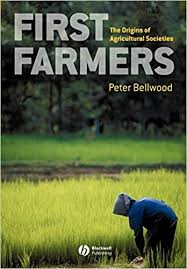 Peter Bellwood in First Farmers presents a hypothesis for the expansion of the Dravidian languages into southern India in the late Neolithic through the spread of an agro-pastoralist lifestyle through the western Deccan, pushing southward along the Arabian sea fringe. At the time I was skeptical, but now I am modestly confident that this is close to the reality.
Peter Bellwood in First Farmers presents a hypothesis for the expansion of the Dravidian languages into southern India in the late Neolithic through the spread of an agro-pastoralist lifestyle through the western Deccan, pushing southward along the Arabian sea fringe. At the time I was skeptical, but now I am modestly confident that this is close to the reality.
There is always talk about “steppe” ancestry on this weblog. But there are groups that seem “enriched” from IVC ancestry, as judged by the Indus Periphery samples. The confidence is lower since we don’t have nearly as good a sample coverage…but I think I can pass on what we’ve seen so far: groups in southern Pakistan, non-Brahmin elites in South India, and some Sudra groups in Gujarat and Maharashtra, seem to be relatively enriched for IVC-like ancestry. Then there is the supposed existence of Dravidian toponyms in Sindh, Gujarat, and Maharashtra. And, their total absence in the Gangetic plain.
There have been decades of debate about Brahui. I’ve looked closely at Brahui genetics, and they are no different from the Baloch. Combined with evidence from Y chromosomes (the Baloch and Brahui have some of the highest frequencies of haplogroups found in IVC-related ancient DNA), I doubt the thesis they are medieval intruders (if they are, their distinctive genes were totally replaced).
Genetically, we know that some southern tribes, such as the Pulliyar, have some IVC-related ancestry. But other groups, such as Reddy in Andhra Pradesh, have a lot more. How does this cline emerge? My conjecture is that there were several movements of “Dravidian” people from Sindh and Gujarat into southern India, simultaneous with the expansion of Vedic Aryans to the north into the Gangetic plain. The region the Vedic Aryans intruded upon, Punjab, was not inhabited by Dravidian speakers. Like Mesopotamia, the Indus Valley Civilization was probably multi-lingual, despite broad cultural affinities developed over time.
The scions of the priest kings
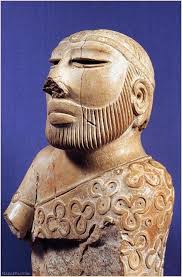 I was talking to a person of South Indian Brahmin origin today about their genetics. Over the course of the conversation, he showed me Y and mtDNA haplogroup types amongst his jati. The vast majority of the Y haplogroups were not R1a.
I was talking to a person of South Indian Brahmin origin today about their genetics. Over the course of the conversation, he showed me Y and mtDNA haplogroup types amongst his jati. The vast majority of the Y haplogroups were not R1a.
Brahmin groups in India seem to be about 15% to 30% steppe in their overall genome. But their Y chromosomes are usually 50% or so R1a1a-Z93. The lineage associated with Indo-Iranian pastoralists.
So what’s going on with the other haplogroups? For example, J2, L, C, G, and H?
From what I can see J2 and L are the next most frequent haplogroups after R1a1a-Z93. This tells us something. These are haplogroups found in ancient “Indus Periphery” samples. And, these two haplogroups are found at high concentrations in the northwest of the subcontinent.
It doesn’t take a {{{Brahmin}}} to connect the dots here. Some of the gotra as early as the Vedic period were almost certainly derived from high-status individuals in the post-IVC society. Warriors and priests in the fallen civilization of the IVC, which had likely degraded itself to a level of barbarism by the time the Indo-Aryans became ascendant.
I like to make jokes about “sons of Indra.” But let’s give the dasyu credit where it’s due: those Indians carrying J2 and L almost certainly descend from the men who build the great cities of yore. Their dominion was lost when their civilization fell, but they integrated themselves into the new order.
Open Thread – 1/16/2021 – Brown Pundits
What’s going on?
I have a 6000-word piece on Indian genetics coming out on my Substak in the next few days (waiting on some maps that were commissioned).
Update: The pieces (had to break into two) are ready to go. Part 1 today and part 2 tomorrow. I commissioned some simple maps and created an infographic. Since these will be “paid” (you have to subscribe), I’ll post the infographic for people here:
The material wages of caste
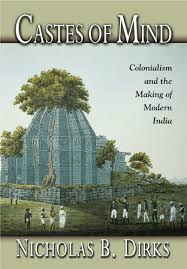 When perusing Twitter I occasionally see arguments between the troll Araingang and contributors to this weblog on various topics. Many times I don’t really what the argument is about because I feel it’s deeply semantic.
When perusing Twitter I occasionally see arguments between the troll Araingang and contributors to this weblog on various topics. Many times I don’t really what the argument is about because I feel it’s deeply semantic.
So, for example, caste, varna, and jati. I know the dictionary definition of all this stuff and the various arguments. As an atheist, and someone who has “no caste” or varna or jati, I’m not very interested in theological arguments as to the origin of these concepts, their validity, and their application. Muslims for example can write 1,000-page books on Tawhid. I don’t care. What I care about is the application of Shariah law upon dhimmis and the heterodox. The rest is commentary.
In the 2000’s I read books such as Nicholas Dirks’ Castes of Mind: Colonialism and the Making of Modern India. The argument and evidence marshaled suggest that the raw materials of the caste system predate the British, but their system of manipulation, organization, and rationalization was critical.
Then, in the period after 2010, I began reading and analyze the genetic data. I was shocked at how clear and distinct varna and jati differences were. My friend Surya Yalamanchili sent me his DNA last year, and I asked him if he was Kamma. He had no idea what that meant, but the genetic evidence seemed persuasive to me from other people he clustered within my private data. He asked his mother, and she said “yes.” He was shocked. I was not.
The conclusion I draw from this, along with patterns such as higher steppe ancestry in “higher varna,” is that there are deep roots and structures to the inequality we see across the Indian subcontinent. It is possible that in fact, the jatis were “separate but equal.” But I doubt that just as I doubt the “peace” Islam imposed upon dhimmis was welcomed on the whole (in some cases, yes). Dalits in particular have very small effective populations. That means their genes show evidence of high levels of inbreeding because of incredibly small marriage networks.
This post is less about what I believe, then trying to understand what you know and believe. The genetic data is something I am familiar with. I work with it. The historical evidence I do not know. Were there Dalit kings? Were there long periods where Brahmins were subordinate as menial servants to Sudra jatis?
I understand that Hindus of a more progressive bent are uncomfortable with the association between caste and their religion and identity. Religion is what man makes it, and so I do not see its connection to Hinduism as necessary, ineluctable, and eternal. But, the impact of caste is so strongly stamped on the genes of so many Indians I cannot brush it away as a detail of history.
Review: Advent of the Algorithm
An old review I wrote (back in 2002) for the magazine Herald.
” The algorithm is …the second great scientific idea of the West. There is no third.”
This sentence at the very beginning of the book should warn us that this is not going to be science writing in the Asimov vein. Dr. Berlinski once boasted that he can be accused of many things, but shrinking from controversy is not one of them. A professor of mathematics, a novelist, something of a poet and the successful author of “a tour of the calculus”, Dr. Berlinski is also famous for his very public insistence that Darwinian evolution does not add up; that something is missing from the story and the high priests are engaged in a cover-up. In “the advent of the algorithm” he sets out to tell us about the algorithm: “a procedure, written in a symbolic vocabulary, that gets something done step-by-step without the need for any intelligent assistance”. But he ends by questioning the ability of science to explain the mind: the intelligence that fashions and uses these algorithms and infuses them with meaning.
The book begins and ends with Gottfried Leibniz. Between inventing the calculus, imagining the monads and carrying out his diplomatic duties, Gottfried Leibniz also laid the foundations of mathematical logic and the science of computing. He is followed by Guiseppe Peano, Gottlieb Frege, George Cantor and others, till we get to the great David Hilbert and his challenge to mathematicians to show that mathematics is consistent, complete and decidable (in principle, if not in practice). Within a few years, Kurt Godel was able to show that this is not possible. After an explanation of Godel’s revolutionary result, Alonzo Church, Alan Turing, Emil Post, Claude Shannon and others are introduced and the reader learns about the developments in logic and mathematics that form the foundations of our modern digital world.
Berlinski’s explanations of these developments are lucid, even brilliant, and someone with little mathematical knowledge beyond high school should still be able to understand what he is saying. But he does not want to stop at the bare bones of the theories. He is determined to give his readers a hint of the larger import of these matters, and he presses into service a number of stories, asides and literary flourishes. Sometimes the prose is so purple, it throbs and begs to be deflated, but the overall effect is not unpleasant. Here is a typical fragment about Liebniz:
“And then, by some inscrutable incandescent insight, Leibniz came to see that what is crucial in what he had written is the alternation between God and Nothingness. And for this, the numbers 0 and 1 suffice.
Twinkies and Diet Coke in hand, computer programmers can now be observed pausing thoughtfully at their consoles.”
And here are the last days of Hilbert in Nazi Germany:
“Hilbert closed his remarks with words that were later inscribed on his tombstone: we must know. We will know.”
“We realize now that that was the last time those words could have been uttered without irony…the mathematicians who had heard his voice and fallen under his command had scattered, some going to the US or South America or even China, others, for all their sophisticated and intellectual cunning, finding themselves packed in freight cars, grinding their way to some place in the east.”
This powerful and humane sense of history and tragedy is accompanied by an almost wicked sense of humor and an absolute unwillingness to submit to fashionable opinion. The stories and asides are generally delightful, though the author could easily have spared us his own amorous adventures and multiple marriages without any loss to the book. The math is challenging, but not overwhelming and worth the effort to understand it. In the last chapters, he takes on the issue of whether the mind is simply an algorithm, albeit a very sophisticated one? The question is not if the mind uses algorithms or if many of its functions can be reduced to algorithms (it does, and they can). The 300-pound gorilla in the room is consciousness: an algorithm is merely symbols, manipulated according to rules (themselves strings of symbols) but an intelligence creates those symbols and assigns them meaning. When the mind sees, something is seen by someone. Who is this someone who sees? Berlinski knows that even the scientists do not know the answer to that. The attack on scientific monotheism in the last chapters may upset those who suspect that such “attacks from within” will provide ammunition to those who wish to bludgeon us into more extreme monotheisms of their own. But Berlinski believes that doubt has brought us this far, it is too late in the day to stop. All the emperors are naked, why should the emperor of science get special treatment? And so he ends with Heraclitus:
”you could not discover the limits of the soul, not even if you traveled down every road. Such is the depth of its form”
Abhinav and me: genetics and India
Saffron on the outside, woke on the inside
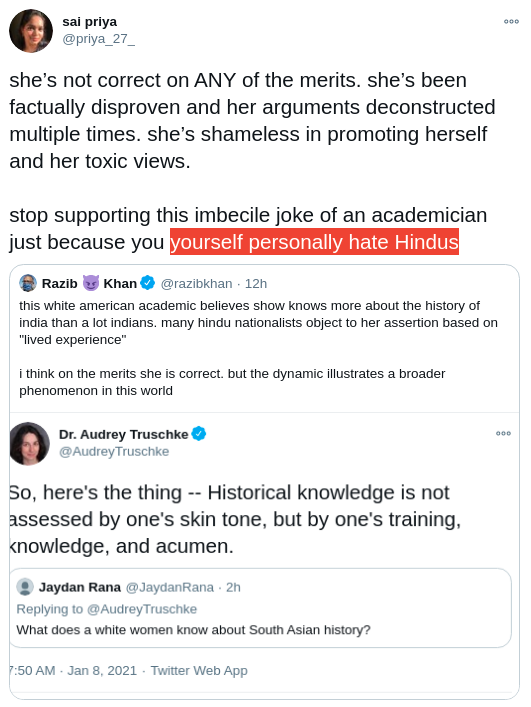
Every few weeks or so I “get into it” with parts of Hindutva Twitter. Some parts of Hindutva Twitter I’m quite friendly with. Other parts, not so much. There is the weird incel-like “Trad Twitter” faction…that always ends up to be strange perverts. But I don’t want to focus on them.
Rather, I want to highlight what I feel is descriptively a fact that though Hindutva and “Woke” factions are opposed in a theoretical sense, the former draws on the style of “thinking” of the latter quite a bit. E.g., the emphasis on many Hindutva sectors on feeling, the lack of humor, and, identitarianism.
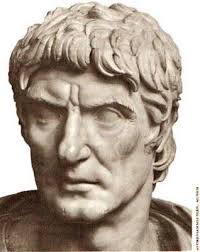 The identitarianism is straightforward. Despite the fact that I’m an atheist they regularly accuse me of being a Muslim. In some cases, this is an honest false positive. Look at my name! In other cases, they assume since I’m making fun of them, I must be a secret sulla with Muhammad or whoever. I’m against them, so I’m for their enemies, or with their enemies. Sometimes they revert to forms of racism (e.g., they are upper-caste Punjabis, so genetically superior, despite being J1 Dasyus!). The ultimate takeaway is the fixation on the group and historical identity, rather than updating to individual identity.
The identitarianism is straightforward. Despite the fact that I’m an atheist they regularly accuse me of being a Muslim. In some cases, this is an honest false positive. Look at my name! In other cases, they assume since I’m making fun of them, I must be a secret sulla with Muhammad or whoever. I’m against them, so I’m for their enemies, or with their enemies. Sometimes they revert to forms of racism (e.g., they are upper-caste Punjabis, so genetically superior, despite being J1 Dasyus!). The ultimate takeaway is the fixation on the group and historical identity, rather than updating to individual identity.
Remember when Ayanna Pressley said someone had to be “politically black” to be black? A sort of primitive identitarianism has taken root amongst Woke people where individual views are derived from group identity, and individual views can negate one’s group identity because the two are so closely tied.
Second, the lack of humor. On my Twitter posts, I engage in a lot of prodding and poking at Hindu shibboleths as well as synthesizing it with absurd genetic points. The whole performance is ludicrous…but some portions of Hindutva Twitter find it problematic. OK, they wouldn’t say “problematic,” but it’s the same reaction. Woke ideology is a form of secular sacredness. Similarly, Hindutva Twitter has sacred cows which I gore now and then. Sometimes people react back playfully…but other times, they don’t get the joke, and when others point out that it’s a joke, they refuse to believe it’s a joke and move to identitarianism. That is, the joke is fake, and I’m actually a Muslim.
A truncated and shriveled sense of humor is common on the modern Woke Left (google Social Justice Comedy; it’s like Communist opera). It is also a feature of very religious Muslims and Christians. A portion of Hindutva Twitter suffers from this.
The last to me is the most important, the emphasis on feeling. This is a personal bias, as I’m a bit “dead on the inside,” so have always been weak on the feels. I hurt the feelings of these people, making fun of them, mocking them, and making light of their culture. I’m a bit of an online barbarian, like the scorpion, I’m going to sting. A portion of Hindutva Twitter can’t understand that my behavior isn’t due to the fact that I hate Hindus, but because I’m an unfeeling asshole. I’m R1a1a-Z93 and U2b. Those who know what this means know that I was born to be a lord over you Dasyus!
There are more than 1 billion Hindus in the world. India is 80% Hindu. This emphasis on feeling, on hurt pride, is classic “wounded civilization” stuff. Hindutva cannot realize whatever its ambitions are until it looks forward, positively, and without concern for feeling, into the future. Woke ideology is deeply regressive, despite its adherence to the label of progressive. Its fixation on “white supremacy” and “colonialism” looks backward, not forward.
All this goes back to Audrey Truschke. My point is that Truschke point in the generality is correct. Indians should object to her scholarship, not to her person. Truschke herself is a hypocrite about this, getting into ideological food fights, and bringing her gender into the discussion. But Hindu nationalists who engage in “Woke Olympics” can only win by hamstringing their own attempts to fashion a positive identity. Woke Olympics is the to maximal oppression and lack of self-respect and dignity.
To end the Kali Yuga you can’t use the tools of the Kali Yuga.
Open Thread – 1/9/2021 – Brown Pundits
A lot went down this week. A lot.
I’ll be going on Abhinav Prakash’s podcast to talk genetics next week.
Why Hindu-Americans Don’t Stand Up For Hindus
One of my earliest memories of my childhood is watching the Mahābhārat with my dad. After we dropped my mom off for her night shift at the factory, we would return home, and a black rectangle filled with film would catapult me into a confusingly wondrous world. From the magical arrows whizzing through battlefields to the terrifying image of Time, the narrator of the epic, transposed across a cosmic abyss, I was glued to a story I couldn’t truly grasp but loved at the same time. I could barely understand what the characters were saying (I spoke Gujarati at home, not the hyper Sanskritized Hindi in the serial) and was too young to read the English subtitles fast enough. I would constantly interrupt my dad, many times to his annoyance, but he would still lovingly explain these stories that would make an imprint on me for the rest of my life.
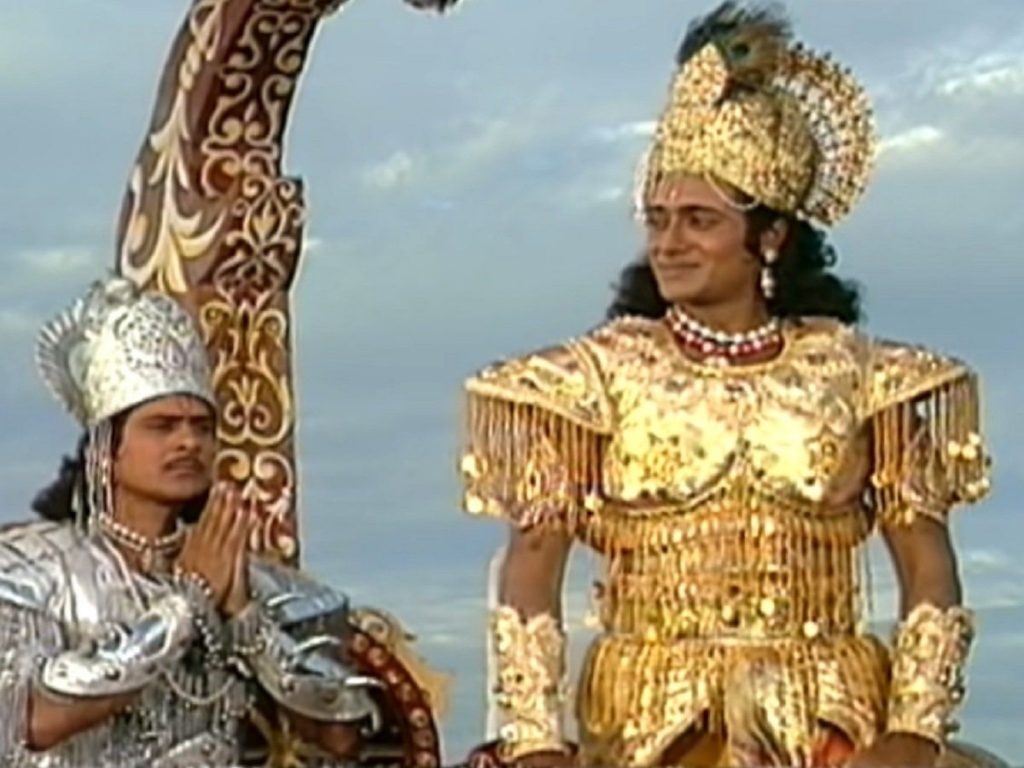
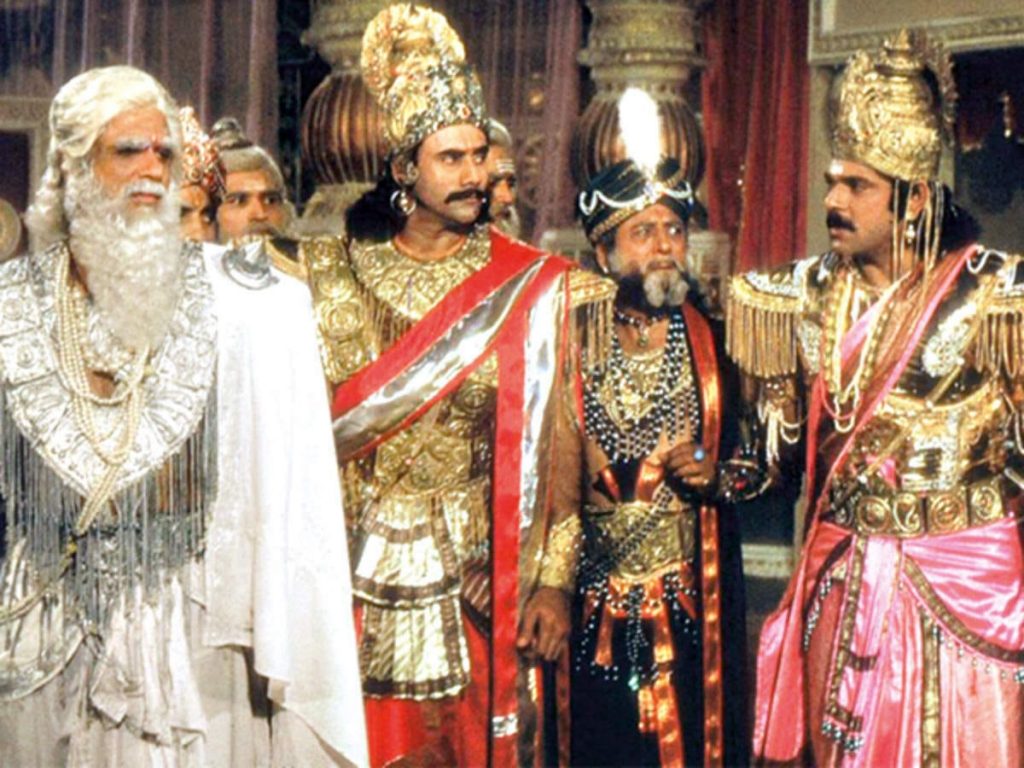
As my life passed, I would see so many of the stories from the Mahābhārat play out in my life and in the world around me. The blind love of a long-gone Dhritarāshtra came alive with my parents, who showed me love, despite my bad behavior, my failures, and my unending ingratitude, one of my greatest flaws. Their love was uncompromisingly unequivocal, and I was an unworthy Duryodhan. I saw the struggles and rise of “low-born” Karna with my own family, as we grew from a family who couldn’t even afford to spare money to buy a popsicle from the ice cream truck that taunted me every day as it passed by my house to slavishly building a motel business in the middle of nowhere to selling it and owning a nice single-family “American Dream” home with many fewer worries than we grew up with. And perhaps most importantly, I saw the devotion or bhakti of Rādhā through my family’s Hindu faith and regular attendance to our local temple – a tradition that grounded us through tough times and brought a sense of community, fellow “gopis” perhaps to share our lives and love with.
Those evenings watching the words of Vyāsa transform into images will forever be special to me. For those nights would fuel the dreams of my days as I grew up connected to a timeless culture and values. And they would doubly serve me when I learned of the nightmarish state of my fellow Hindu diaspora with regards to their views on Hinduism and Hindus.
In The Battlefield
To find the answer to the titular question, I did a bit of “field reporting” one weekend with my fellow Hindu-American friends starting off with a simple question:
Why do you stand up for Black, Hispanic, and Muslim people for the injustices they face, but not for Hindus?
The most common responses were along the lines of:
-
- “What injustices faced by Hindus are you talking about?”
- “I honestly don’t know what type of issues we face, besides normal ‘brown’ discrimination here.”
- “I’ve never seen any from the media I consume” A general theme of genuine innocent unawareness was what I saw.
So I prodded further and mentioned the atrocities Hindus face in Pakistan, Bangladesh, and even parts of India. Yet Still, the answer was “I literally never heard this before.”
Then came a visible sense of discomfort, and I know why. My question then silently morphed to “Why don’t you stand up for your own people” in their minds. I didn’t need to spell it out, but it turned into those very cutting words – why don’t you stand up for your own…
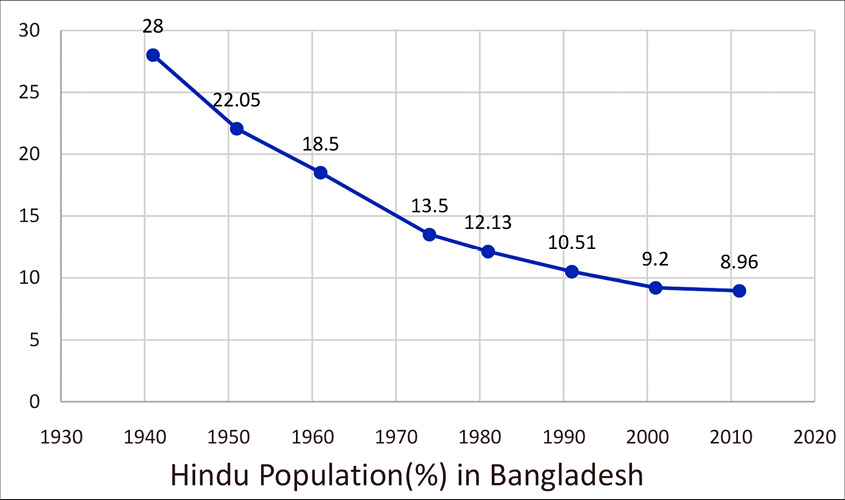
The rapes, the forcible conversions, the killings, the discrimination, the demographic collapse all signaling horrors that didn’t have any similar magnitude of rivals in India. The initial response was denial or wishing away the numbers I gave them: “Oh how do you know all that happened to them?!” “Maybe they converted willingly!”
I mentioned CAA and the refugees begging to return to the land of Dharma. Denial then became equivalating.
“Well, this all probably happens in India too!”
I kept unpacking this. I ask them, “why do you think this way?” Note – I tried to avoid a confrontational tone as much as possible, just neutral questioning so as to not pry open any vitriolic reaction. They talked about their parents’ hysteria over Pakistan, their WhatsApp forward fueled hatred, etc… I tried to explain to them that the equivalence wasn’t there. That the magnitude of what happens to Hindu minorities in Pakistan and Bangladesh is much worse presently and historically than what happens to non-Hindu minorities in India.
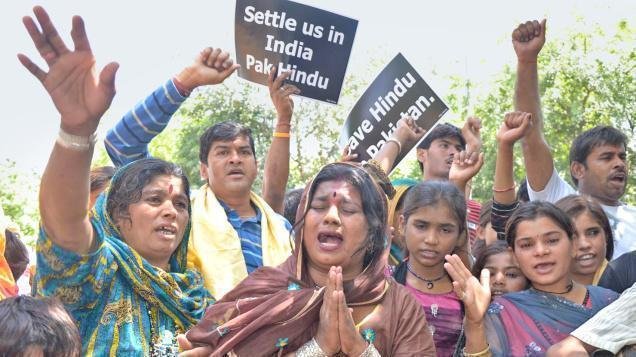
But they just weren’t having it.
“I don’t believe you. India is just as bad”
Now, India is of course not perfect, now or historically. But it is a work in progress. It is diversity in action in a way very few countries (The United States and Brazil are the only ones that come to mind) can compete with. India is pluralism, both its virtues and flaws.
By this point, we linked up with a few other friends and the conversation dropped. But let’s continue this theme with a few other independent observations and anecdotes.
Misinformation Warfare
Modi equals Trump – this fantastically false idea is an atomic bomb on one’s perception of India. A very simple notion that has a number of externalities. Hindu-Americans are fairly “woke” from my personal experience, and Indian-Americans heavily lean Democrat. Standard diatribes against “45” are common when talking politics with my Hindu-American friends. I don’t really care as I don’t support him, but the Trump Derangement Syndrome (TDS) gets tiring after a while.
Policy-wise (you know, the actual actionable impact that changes people’s lives and futures), Modi has done more socialism in one term than Bernie Sanders will ever do in his lifetime. The comparison fails at almost every metric:
-
- Modi has enacted a litany of “socialist” measures and welfare schemes including:
- Swacch Bharat – an initiative to rid India of open defecation by building toilets as well as raising menstrual health awareness for women.
- Ayushman Bharat – Extending healthcare to India’s poorest 500 million people and continuously expanding.
- Ujjwala Yojana – Providing 60+ million poor households with free liquid petroleum gas connections that are safer and more healthy than traditional wood-fired methods.
- Jal Jeevan Mission – Along with a frenetic infrastructure push to integrate India’s rural and poor, an integral piece has been Jal Jeevan, where households are connected to give every Indian rural household a tap water connection by 2024; luckily something that is well on its way to being achieved.
- A massive push for renewable energy as India integrates solar energy at an unseen scale amongst the world in order to meet international climate goals and combat local pollution.
- Modi, who hails from a poor and lower caste background, possesses a total net worth hovering under $400,000 currently, while the main opposition party’s leaders, the Gandhis, stand in the billions.
- He has continuously and consistently reached out to all Indians and is pushing common law for all Indians through Universal Civil Code.
- And many others…
- Modi has enacted a litany of “socialist” measures and welfare schemes including:
Right Wing, Left Wing, “nationalism”, “conservative” and other meaningless labels are even more irrelevant when thrown into the ocean of Indian politics. They sink into nothingness. They’re pointless.
But to many Hindu-Americans, “Right-Wing”, “Nationalist”, “conservative” are terms that immediately make them see red, and “RACIST” pops into their mind in big white letters. I don’t care about your 14 syllable ideology. People see things through simple lenses. It doesn’t matter what Modi and Trump actually do to a lot of people; it matters how they are characterized.
Fuck your nuance. Damn it to hell.
Hassan Minhaj told me what I need to know in a 12-minute 37-second segment on a now-canceled Netflix show. I trust the consistently wrong coverage of the New York Times – yes the same one that complained why more Indian people aren’t dying of coronavirus. Additionally, it’s quite clear that “South Asian” organizations in the US have explicitly blacked out mentioning these atrocities as it would hurt their respective lobbies.
With community organizations, media, and celebrities silent – how can Hindu-Americans be aware?
American Dharma
Now let’s talk about religiousness.
Hindu-Americans have some of the highest retention rates of religious identification in the US.
I can’t judge others’ religiosity, but from what I’ve anecdotally seen. Hinduism is many times a more aesthetic/background thing than practice for Hindu-Americans. Sometimes it seems samosa and chicken tikka masala have more weight in their culture than pujas and scripture. Now token ritual involvement happens every time Diwali rolls around, but to me, Hindu-Americans really just aren’t “self-aware.” Funny as Hinduism places so much emphasis on self-discovery and reflection.
Another thing – explicit politics is pretty far removed at American Hindu temples versus other diaspora places of worship. Political rhetoric that’s common at other religious places isn’t a mainstay in mandirs; and honestly, I am glad this is the case. Religion to me is more about immediate community and individual practice rather than political machinations across the Atlantic. I’ve seen firsthand how the ugliness of politics warps American religious communities where identity realpolitik replaces spirituality for many of these “religious adherents.” Where insulting the “Other” is more important than praising the Omniscient.
Ideally, religion would be separate from politics. But we can’t deny a battlefield once we’re on it. Hopefully, temples stay out of the fray of such rhetoric, but Hindu-Americans outside of it strengthen.
So in conclusion, the answer to the question:
1. Genuine unawareness of Hindu injustices driven by media, community, and political organizational blackout. 2. Right-wing and left-wing notions don’t translate well across Indian and American politics. Many Hindu-Americans see red once “right-wing” is mentioned. 3. Religion and politics don’t mix at Hindu temples unlike other religions.
The Craven
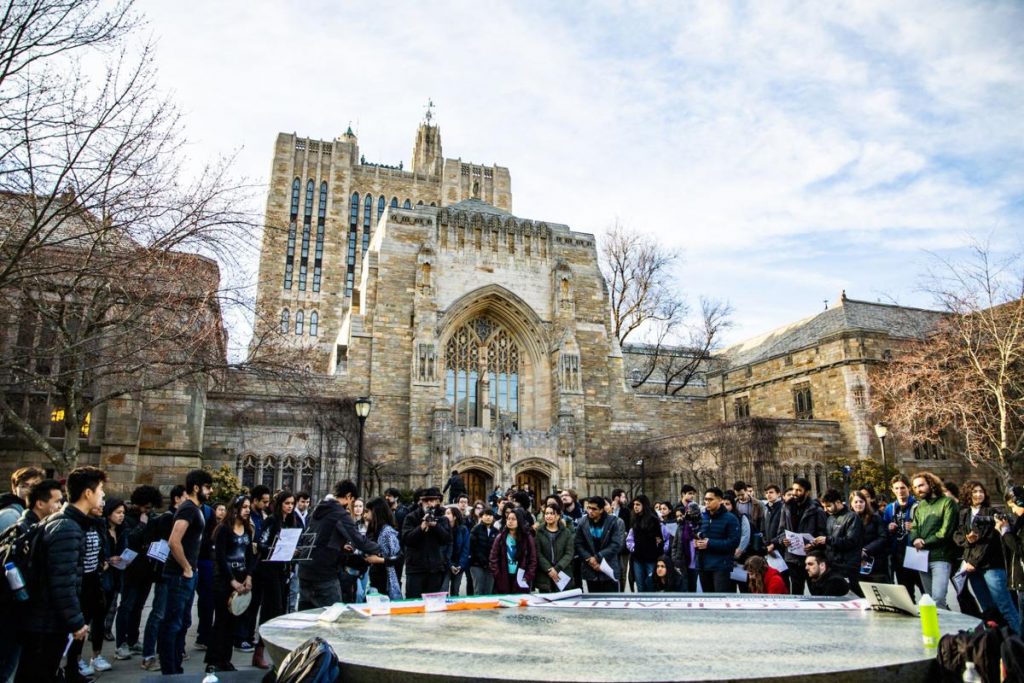
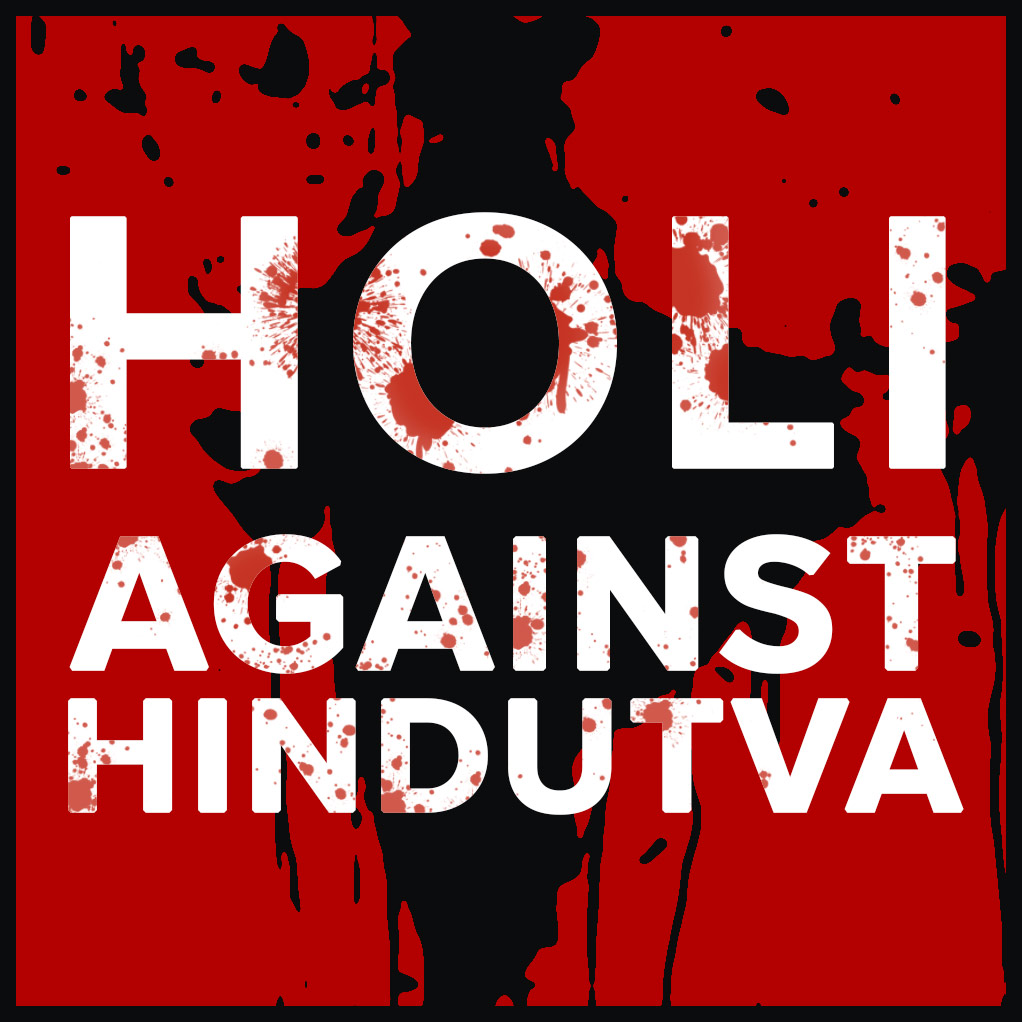
Now while we’ve answered our query, I want to add an addendum to a vile specimen I’ve seen recently amongst the diaspora. Aping their equally contemptible cousins back in the subcontinent, this emergence of Indian-Americans who speak in the poisonous tongues of India’s elites is now slowly seeping into mainstream American culture.
They seek to transplant American history and dynamics onto India just as blindly as India’s elites have over the decades. Equating Hinduism itself to white supremacy and fascism and defining it solely by casteism are standard affairs for this type. They have no ingenuity in their discourse. The blueprint of their commentary is amateur oppression Olympics. Their foundations are self-loathing. Their walls are an echo-chamber blocked off by the soulless skyscrapers of coastal elites on one side and the great blue filter of social media on the other. Their roofs are paid for by verbal prostitution. Their material is so common, yet they have a profound disdain for commoners. They are copy + paste. Many are essentially white progressives with a sprinkling of turmeric and cumin for empty color and scant flavor.
They are from South Asia, not the Indian Subcontinent. Their culture can be summed up into samosas, chicken tikka masala, a few “South Asian” outfits, and henna. Depth is an allergy to them so their roots are forever undiscovered but much-maligned. They will go out of their way to pin every misfortune and misery inflicted upon other minorities as purely due to economics or European imperialism, but will not hesitate to blame the downfalls of India solely on Hinduism and its indigenous culture. On the off chance that they navigate blame to the British, they will remain mum on the equally or even worse atrocities of the Mughals and their hate-filled predecessors. Their silence screams at the scars and ruins of their ancestors’ temples, all to preserve this mythic “solidarity” amongst fellow “South Asians.”
As they watch their fellow Indian-Americans break all barriers, their reflex is dismissal. When our minority becomes model, they relentlessly attack their own people instead of appreciating and applauding. Excuses for success rather than attributing it to hustle and immigrant sweat. They write paragraphs lamenting how every Indian-American has come to America with a silicon laced gold brick in their mouths, a silver stethoscope around their necks, or a platinum high caste thread over their shoulder. They wash away the struggles of immigrants with haughty commentary and exhibit a saffron-tinged white guilt. They seek to be the oppressed lamenting at the impending “fascism” that is perpetually 1 Republican representative away from arriving and simultaneously the oppressor as they claim Hinduism itself is oppression. They cloak their jibes in a mythic and undefined “Brahminism” where they attribute normal Hindu practices like vegetarianism, innocent rituals, and practices performed by all castes and communities as part of a grand conspiracy of “Brahminical supremacy;” the irony being that many of these commentators are Brahmins or high caste themselves! Due to their skin color and last name, they believe they are the chosen voice for over a billion other Indians and millennia-old civilization.
Essentially, they care about what India looks like, not what it is. They seek approval at any cost. But either way and in the end, why should they expose their necks in courage when they can swallow their pride, forever remaining craven?
